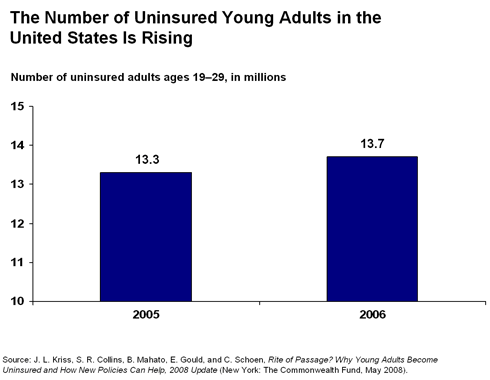The number of uninsured young adults in the United States rose to 13.7 million in 2006—an increase from 13.3 million in 2005—making the 19-to-29 age group one of the largest and fastest-growing segments of the population without health insurance.
In the newly updated Rite of Passage? Why Young Adults Become Uninsured and How New Policies Can Help, Commonwealth Fund researchers report that 38 percent of high school graduates who do not attend college and 34 percent of college graduates will spend some time uninsured in the year after leaving school. Two-thirds of young adults who went through a period without insurance in the past year also went without needed health care due to the cost.

Young adults often lose coverage at age 19 when they are dropped from parents' policies or from the rolls of public programs like Medicaid and the State Children's Health Insurance Program (SCHIP). In addition, working young adults are much less likely than older workers to have access to health insurance through their employers—just over half (53%) of 19- to 29-year-olds were eligible for coverage offered by their employers, compared with about three-quarters (74%) of 30- to 64-year-olds.
There is some good news, however. Twenty states have now passed legislation requiring insurers to extend dependent coverage beyond age 18 or 19. The new age limits range from 24 in Delaware, Indiana, and South Dakota to 30 in New Jersey. Moreover, some congressional bills have proposed allowing states to extend eligibility for Medicaid and SCHIP beyond age 18.